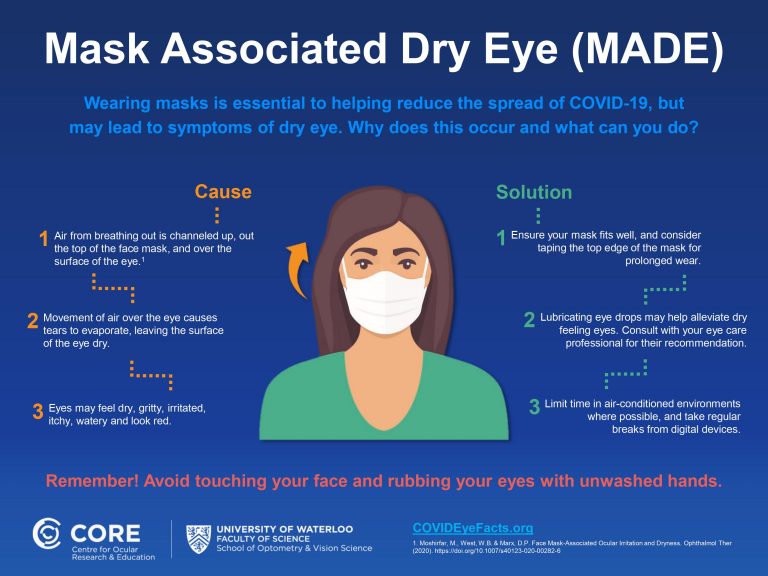The use of face masks has been determined over the months of the pandemic to be essential to slow down the spread of the coronavirus that causes COVID-19. As with any change in behavior, though, there are unanticipated impacts. In this case, when a loosely worn mask redirects your breath upwards past your eyes, it can cause tears to evaporate more quickly. This leads to a new phenomenon: Increased reports of “dry eyes” to eye care professionals (ECPs).
The Centre for Ocular Research & Education (CORE) at the University of Waterloo in Canada are advising ECPs and dry eye sufferers on how to recognize what is now called “mask-associated dry eye” or MADE. And CORE is sharing methods to mitigate the causes and symptoms.
“Face masks are crucial in the fight against COVID-19, and ECPs are well-positioned to provide patients with advice on appropriate wear in order to maximize eye comfort,” said Dr. Lyndon Jones, director of CORE. “Asking patients about their mask-wearing experiences and providing a few helpful tips takes little time and can make a substantial difference.”
MADE: What is it and who may get it?Read More »Face Masks Can Cause Mask-Assisted Dry Eye Symptoms – How to Treat?



